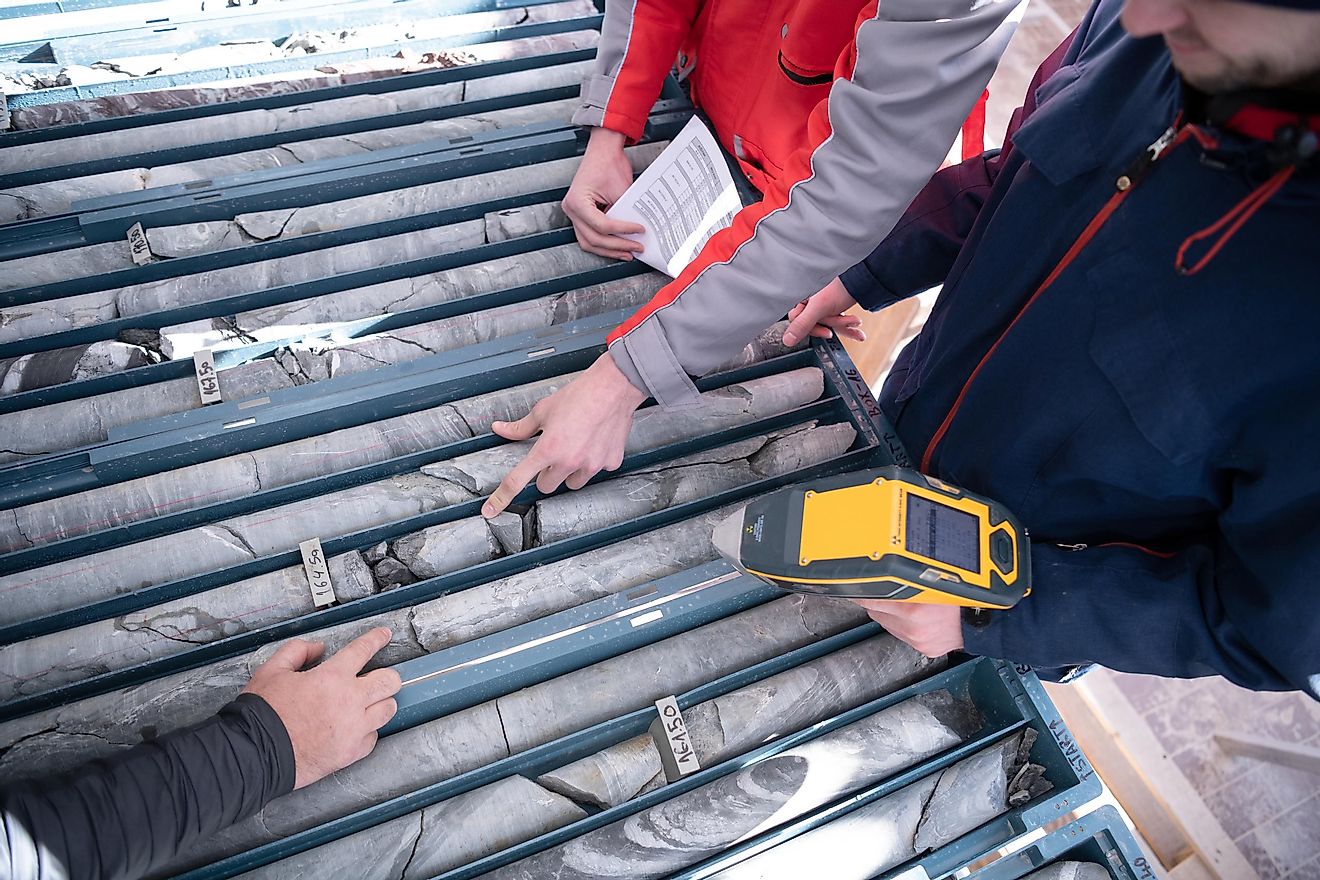Did You Know The Gold In The Earth's Core Could Cover The Earth In A Knee-High Layer?

People have been mining platinum and gold, and many other precious minerals from underneath our earth's surface for thousands of years. These activities may have depleted some of these minerals in some places. Still, scientists recently discovered that the earth indeed has enormous amounts of these deposits, especially those sitting close to its core. This happened as early meteorite gold and mineral showers bombarded the earth's core during its formation. Because of the earth's then-molten state following its formation, most of this abundant, yet heavy, element sank to the core. As a result, the silicate mantle over the core trapped enormous amounts of gold and other minerals well out of reach. There is enough gold at the core of the earth to cover the planet's surface is 13 inches of the stuff, but it’s 1,800 miles below our feet and at many thousands of degrees.
Rocks: Then Versus Now
Professor Elliot and Doctor Willbold from Bristol University in England worked on their hypotheses that gold contents at the earth's surface were once much, much higher than at present. The men received funding from the Natural Environment Council, the Deutsche Forschungsgemeinschaft, and the Science and Technology Facilities Council. The quest started with four billion-year-old rocks found in Greenland by University of Oxford Professor Moorbath. Both scientists worked to prove their theory by analyzing the rocks' tungsten content compared to modern-day rocks. They found 15 parts per million drop-off points from isotope 182W found in modern-day rocks compared to the ancient Greenland rocks. This experiment showed that the difference in tungsten content proved their hypothesis.
Need More Proof?
Geologists further substantiated the study conducted by Professor Elliot and Doctor Willbold from Bristol University at the University of Maryland. University of Toronto geologist James Brenan asserted the same theory as previously stated and did so in agreement with geologists from the University of Maryland. As the earth's core was being formed billions of years ago, the very high temperatures melted the precious minerals from the rocky crust, allowing the minerals to solidify after they seeped down into the earth's mantle. Another query cropped up why there are sizable amounts of other minerals still found on the rocky crusts, like rhodium and platinum. The geologists found in their study that these minerals were not redeposited on the rocky crusts from down below the earth's surface. They theorized further that meteorites and comets were responsible for the current mineral deposits found on the rocky crusts, and these occurred later after the earth had solidified.

A Gold Digging History
The extraction of gold from below the earth's surface could have started as early as 7,000 years ago. This is evidenced by the gold jewelry and other artifacts of antiquities found in the Varna Necropolis gravesites in Bulgaria, which was built sometime between 4,700 BC and 4,200 BC. Another ancient gold mine is located on the Sakdrisi site in the southern portions of Georgia's nation. The ancient Romans also mined gold, which was one of their primary reasons for invading Britain and Transylvania. Roman gold mining extended into the Balkans, Egypt, Armenia, Nubia, and Anatolia under Emperor Justinian's rule. During the Medieval period in Europe, the Slovac Kremnica mine was the biggest source of the mineral. The 19th Century ushered in the gold rush in major parts of the New World as well. The Victorian Gold Rush, Klondike Gold Rush, California Gold Rush, and the Witwatersrand all led to establishing cities and fortunes in what were once wilderness areas.
Deep Down Below
Historically, the earth was thought by Edmond Halley in 1692 to be a hollow shield with a thickness of 500 miles. This shield was thought to encompass two other shells that encircle an inner core. This theory was published in the Philosophical Transactions of the Royal Society of London. Today, however, we know that the earth has five "chemical" layers. These are the inner core, outer core, lower mantle, upper mantle, and crust. The "geologic" sections therein are the inner core, outer core, lower mesosphere, upper mesosphere, mantle, upper mantle, crust, and lithosphere. The "mechanical" layers of the earth are the inner core, outer core, mesospheric mantle, asthenosphere, and lithosphere.







